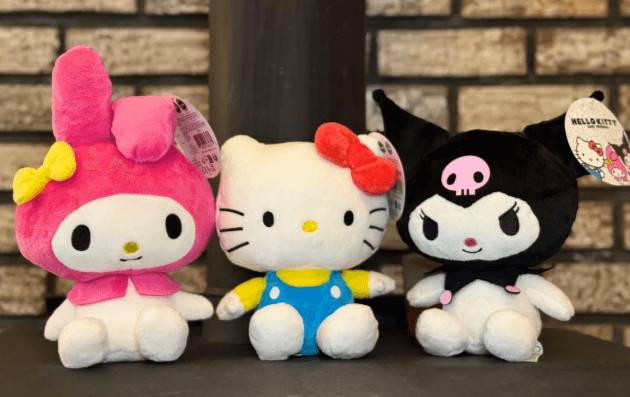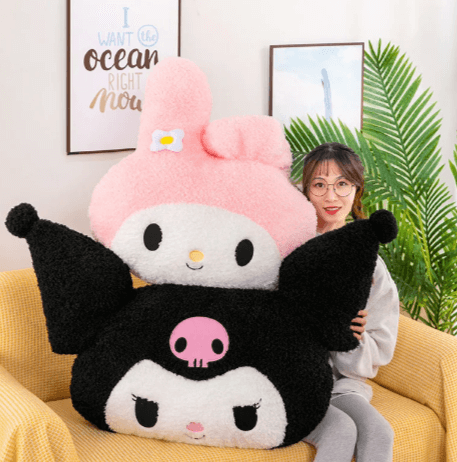
kuromi:fox5ydxdt58= kawaii:fta3pu7hpce= hello kitty
Introduction
Kuromi, Kawaii culture, and Hello Kitty each represent unique and beloved aspects of Japanese pop culture. Kuromi is known for her punk-rock style and mischievous personality, Kawaii culture emphasizes all things cute and charming, and kuromi:fox5ydxdt58= kawaii:fta3pu7hpce= hello kitty remains an enduring icon of innocence and universal appeal. This article explores their histories, cultural impacts, and future directions.
The Origins of Kuromi
Kuromi was introduced by Sanrio in 2005 as a counterpart and rival to My Melody. Created by Matsubayashi Atsuko, Kuromi quickly gained popularity with her distinctive jester’s hat and punk-rock style. Her playful yet rebellious personality made her stand out among other Sanrio characters, appealing to fans who enjoy a character with an edge.
Kuromi’s Character Design and Personality
Kuromi’s design is both cute and edgy. She wears a black jester’s hat adorned with a pink skull, symbolizing her mischievous nature. Her personality is a mix of toughness and vulnerability—she loves causing trouble but also enjoys writing in her diary and dreaming about her crush. This duality makes her a relatable and multifaceted character.
Kuromi’s Role in Sanrio Universe
Within the Sanrio universe, Kuromi plays a unique role. While often seen as an antagonist, particularly to My Melody, she is also beloved in her own right. Kuromi’s dynamic interactions with other characters and her standalone appeal highlight Sanrio’s ability to create characters that resonate across different themes and styles.
Understanding Kawaii Culture
Kawaii, a Japanese term that translates to “cute” or “adorable,” has become a cultural phenomenon both in Japan and worldwide. It emerged in the 1970s and 1980s, becoming a significant aspect of Japanese culture. Kawaii culture emphasizes innocence, playfulness, and a childlike charm, influencing various aspects of life from fashion to media.
Key Elements of Kawaii Culture
Key elements of Kawaii culture include:
- Bright Colors: Use of pastel and vibrant colors to create a cheerful and inviting look.
- Cute Characters: Adorable characters with big eyes and expressive faces.
- Playful Designs: Incorporation of fun and whimsical elements such as hearts, stars, and flowers.
- Youthful Aesthetic: A focus on childlike innocence and playfulness.
Kawaii in Fashion and Lifestyle
Kawaii culture has significantly influenced fashion and lifestyle trends. In fashion, this translates to clothing with playful designs, pastel colors, and cute accessories. Lifestyle aspects include home decor, stationery, and even food presentation, all designed to evoke a sense of joy and charm. The influence of Kawaii can be seen in everything from street fashion in Harajuku to global trends in cute and quirky designs.
Kawaii in Media and Pop Culture
Kawaii culture is prevalent in media and pop culture, with its influence seen in TV shows, movies, and advertising. Anime and manga often feature Kawaii elements, creating characters and storylines that appeal to fans of all ages. Kawaii aesthetics are also used in marketing and branding, making products more appealing and approachable.
Hello Kitty: A Global Icon
Hello Kitty, created by Yuko Shimizu and introduced in 1974, is Sanrio’s most iconic character. With her simple design—a white cat with a red bow—Hello Kitty represents innocence, friendship, and universal appeal. Over the years, she has become a global icon, with her image appearing on a wide range of products, from toys and clothing to home decor and electronics.
Hello Kitty’s Design and Personality
Hello Kitty’s design is minimalistic yet instantly recognizable. She has no mouth, which Sanrio explains allows her to speak from the heart. Her personality is gentle, kind, and always ready to help a friend. These traits have made her a beloved figure worldwide, symbolizing universal values of love and friendship.
Hello Kitty in Media and Pop Culture
Hello Kitty has appeared in numerous TV shows, movies, and other media forms. These appearances often emphasize themes of friendship and adventure, reinforcing her positive and uplifting character. Beyond media, Hello Kitty’s image is ubiquitous in fashion, toys, and even household items, demonstrating her vast influence on pop culture.
Comparing Kuromi and Hello Kitty
While both Kuromi and Hello Kitty are part of the Sanrio family, they embody different aspects of the brand. Hello Kitty represents sweetness, innocence, and a broad universal appeal. In contrast, Kuromi offers a more rebellious and edgy persona, attracting fans who appreciate her unique style and attitude. Their contrasting characteristics highlight Sanrio’s versatility in creating characters that resonate with diverse audiences.

Kawaii Merchandise and Collectibles
Merchandise is a significant aspect of the popularity of Kawaii culture, Kuromi, and Hello Kitty. Kuromi’s punk-rock style is featured on various products, including plush toys, apparel, and accessories. Hello Kitty’s extensive product range covers everything from stationery and clothing to home decor and tech gadgets. Kawaii-themed merchandise often includes playful designs, bright colors, and adorable characters, making them highly sought after by fans and collectors alike.
Fan Communities and Fandoms
The fan communities dedicated to Kawaii culture, Kuromi, and Hello Kitty are vibrant and active. These fandoms share a passion for their favorite characters and aesthetic through fan art, cosplay, and online discussions. Social media platforms and fan conventions provide spaces for fans to connect, share their creations, and celebrate their shared interests.
Read Also kuromi:fox5ydxdt58= sanrio:dy2myjycz4g= bunny:u2_ffwmkpte= hello kitty
Cultural Impact of Kuromi
Kuromi has made a significant impact on pop culture, particularly among fans of alternative fashion and gothic aesthetics. Her unique look and personality have inspired countless fan artworks, cosplay, and even fashion trends. Kuromi’s appeal lies in her ability to resonate with those who value individuality and nonconformity, making her a cultural icon in her own right.
The Global Reach of Hello Kitty
Hello Kitty’s appeal is truly global, with fans from all corners of the world. Her image is recognized universally, making her a powerful symbol of Japanese pop culture. Hello Kitty has appeared in various international collaborations, from fashion brands to food products, further cementing her status as a cultural icon. Her global reach is a testament to her enduring charm and the effectiveness of Sanrio’s marketing strategies.
Sanrio Characters in Collaboration
Sanrio often collaborates with other brands to create unique products featuring Kuromi and Hello Kitty. These collaborations highlight their unique characteristics while celebrating their shared Sanrio heritage. From limited-edition merchandise to themed events, these projects attract fans of both characters and showcase the versatility of Sanrio’s creations.
Kawaii Influence on Modern Media
The influence of Kawaii culture on modern media is profound. Elements of Kawaii can be found in contemporary art, music, fashion, and digital media. The aesthetic’s emphasis on cuteness and charm appeals to a broad audience and has led to its widespread adoption in various creative fields.
Future Prospects for Kuromi, Kawaii, and Hello Kitty
The future looks bright for Kawaii culture, Kuromi, and Hello Kitty. Sanrio continues to innovate with new products, media appearances, and collaborations, ensuring these characters remain fresh and exciting. The global appeal of Kawaii culture and its characters suggests a continued influence on fashion, media, and popular culture.
FAQs about Kuromi, Kawaii, and Hello Kitty
Where did Kuromi originate? Kuromi was created by Sanrio and first appeared in 2005 as a rival to My Melody.
What defines Kawaii culture? Kawaii culture is characterized by its emphasis on cuteness, bright colors, playful designs, and a youthful aesthetic.
How does Hello Kitty differ from Kuromi? Hello Kitty embodies sweetness and innocence, while Kuromi represents a rebellious and edgy persona.
What types of merchandise are available for Kawaii, Kuromi, and Hello Kitty? Merchandise includes plush toys, apparel, accessories, stationery, and home decor, among other items.
How has Kawaii culture influenced fashion? Kawaii culture has inspired playful and colorful fashion trends, incorporating cute designs and whimsical elements.
What are some notable collaborations involving Kuromi and Hello Kitty? Collaborations include limited-edition merchandise and themed events that highlight their unique personalities and shared Sanrio heritage.
Conclusion
kuromi:fox5ydxdt58= kawaii:fta3pu7hpce= hello kitty each hold a special place in the world of Japanese pop culture. The charming appeal of Kawaii culture, Kuromi’s rebellious edge, and Hello Kitty’s universal charm showcase the diversity and creativity of Sanrio’s creations. As these cultural icons continue to evolve and inspire, their impact on fans and popular culture remains profound. The enduring legacy of Kawaii culture, Kuromi, and Hello Kitty is a testament to their timeless appeal and the innovative spirit behind their creation.






